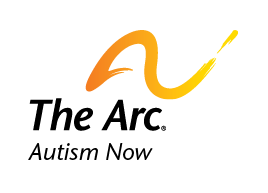Incorporating Students with Autism in Your Classroom: Dennis’s Story
by Jennifer Sladen with Kathy Alderton, Barbara Fisher, and Valerie Lankenau
Including students with special needs in your classroom encourages acceptance of individual differences and more opportunities for students to develop friendships and respect for all people. However, for many teachers, having students with special needs – like autism and other developmental disabilities – can create additional challenges.
In this article, a team of sixth-grade general education teachers offers stories and advice to assist you in incorporating students with autism and other developmental disabilities in your classroom. In particular, they discuss their experiences with Dennis, a student diagnosed with Asperger’s Syndrome. Dennis had an above average intellect but had difficulties socially, especially dealing with peers. This team’s goal was to assist Dennis in developing social skills and peer interpersonal skills.
These experiences and advice cover many of the steps taken in incorporating students with autism into the general education classroom, including:
- setting up a classroom to accommodate your student and entire class’s physical, environmental, curricular, and instructional needs;
- identifying student strengths and problem areas and brainstorming adaptations needed to effectively include student in classrooms;
- collaborating with other teachers, paraprofessionals, aides, and parents to support student; and
- evaluating the student’s progress and monitoring the effectiveness of adaptations.
Meeting Classroom Demands
The classroom design greatly impacts the ability for any student to learn. By carefully considering classroom demands, teachers may help reduce the impact of learning problems for students with special needs. Common considerations that teachers may need to think about include the physical organization of the classroom; classroom routines, rules, and culture; student groupings in a classroom; types of materials taught and assistive devices used; and methods used to teach skills to all students.
For Dennis, the team had three different classroom options for placement. Each classroom had different classroom rules, routines, structures, and groups of students. The team decided to place Dennis in a classroom that had clear and structured rules and routines. This classroom would allow Dennis to more easily anticipate daily activities. Dennis was also placed in a class with peers that he previously worked well with and had befriended. This encouraged Dennis to feel more comfortable in a new classroom and grade.
Additionally, when arranging the classroom seating plan, Dennis was strategically surrounded by other students that exhibited positive social behaviors so that he was able to observe positive models. These students helped Dennis learn positive social skills by working with him in group work, reminding him of classroom routines when necessary, and providing him the opportunity to test out interpersonal skills.
Finally, the teaching team agreed to treat Dennis as they would any other student. They explained to him that they had the same behavioral expectations for him as they would have for any student in the class. This was a departure from previous years. In earlier grades, Dennis had been allowed to sit UNDER his desk when he chose to do so or to freely move about the room whenever he wanted to, causing a disturbance to other students. However, the team insisted that Dennis sit in his chair during class. The team’s expectations and peer modeling worked to improve this behavior.
Identifying Students Strengths and Problem Areas to Determine Needed Adaptations
All students – including those with special needs – have patterns of learning strengths and weaknesses. You will need to consider strengths and weaknesses that students may have academically, socially and emotionally, and physically. These strengths and weaknesses may be noted in a student’s Individualized Education Program (IEP) or may become evident after working with the student. After identifying these strength and weaknesses, student learning needs should be reviewed and analyzed within the classroom structure. While the classroom structure may be amended to be more inclusive, mismatches may still occur. These mismatches may lead to the development of adaptations – accommodations that assist students in accessing class content or modifications to classroom content and performance outcomes – to minimize their impact on the student’s ability to learn and achieve IEP goals.
Generally, adaptations should follow guidelines below:
- Adaptations should address “won’t” and “can’t” problems differently. “Won’t” implies that the student could do what is expected but needs additional support; “can’t” implies that the student is not able to follow the classroom demand.
For Dennis, the difference between “can’t” and “won’t” is best shown by his behavior of not wanting to go outside at recess because of his fear of bees. In previous years, teachers had allowed Dennis to stay inside the classroom during recess, assuming that he “can’t” go to recess because of this fear. However, the team learned that this was actually a “won’t” situation. Dennis needed to have someone recognize his great ability to spot and avoid bees on the playground. Seeing this, the team asked Dennis to take on the important task of counting the bees and informing the supervising teacher. From that day forward, Dennis would proudly go out to recess and report his bee count. Eventually, he asked to be relieved from bee count duty to play with other kids.
- Adaptations should be as simple as possible. A good rule of thumb is to start off trying the intervention that requires the least additional teacher time and effort and positively impacts the student.
Dennis had sensitivity to the sound of the buzzer on the fire alarm. When fire drills would occur in class, teachers in previous years had told him 3-5 hours before the drill that it would occur and let him leave class so that it did not upset him. This was problematic for two reasons. First, Dennis would stress the entire day until the fire drill occurred. Second, it did not resolve the issue of Dennis knowing how to properly respond in a fire drill. So, the team reviewed the steps and procedures for fire drills with Dennis as they would with the rest of the class, and the team told Dennis that we would not tell him beforehand when drills would occur. This way, he would stop worrying and would learn over the year to deal with the loudness and unexpectedness of the fire alarm.
- Adaptations should be age-appropriate to the student and should have demonstrated effectiveness in the classroom.
Another social skill that Dennis needed to develop was greeting adults. Previously, Dennis had greeted teachers and other adults by hugging them. However, the team knew that Dennis would need to work on this for future situations, and the fact that other students found this awkward was making it more difficult for Dennis to interact with others. The team explained to Dennis that shaking hands was a more acceptable greeting in this grade and taught him to shake hands with adults he came into contact with. By having this discussion and reinforcing it repeatedly when interacting with Dennis over a few weeks of the first semester, he caught on quickly to this social skill.
Working Collaboratively with Other Teachers and Parents to Effectively Include Student in Classroom
No teacher works with students in a vacuum – working with other teachers and parents is undoubtedly a normal part of your day. When you include students with special needs in your classroom, you will most likely continue to engage with teachers and parents. Additionally, you may also need to spend additional time working with a student’s parents, general and special education teachers, paraprofessionals, and aides to develop and monitor adaptations.
In Dennis’s case, the teaching team regularly met 2-3 times a week to discuss all of our students, of which Dennis’s progress was a part. They also met every other week with Dennis’s special education teacher to discuss his progress. During these meetings, the team reviewed any adaptations needed for Dennis as well as the best ways to best meld together the work that the special education teacher and the team were doing. Finally, they met with Dennis’s parents several times during the first marking period to discuss classroom behavior and progress. As the year continued, the meetings with the parents and special education teacher occurred less frequently because Dennis was doing very well.
Evaluating Student Progress and Monitoring Adaptation Effectiveness
Finally, it is important to consider how you will evaluate how well the student is progressing as well as how effective the adaptation has been in minimizing the student’s challenges. Some common ways of doing this include through grades; observations; portfolios; performance assessments; and teacher, parent, and student ratings.
For Dennis, the teaching team observed Dennis’s progress and discussed observations at team meetings 2-3 times a week. Additionally, the team gathered feedback from Dennis and his parents at parent-teacher conferences each grading period. Through this tracking, the teaching team was able to identify how well each adaptation was working for Dennis and how Dennis was faring in the classroom.
After Dennis left sixth grade, he continued onto junior high, high school, and a university. There, he successfully received his bachelor’s degree and lives and works in his community. The team is always excited to see his progress and thankful that they may have helped Dennis learn social skills needed throughout his life. We hope that Dennis’s stories, the teaching team’s experiences, and this general advice will help any teacher working to incorporate students with autism and other developmental disabilities in their classroom.
If you have questions or if you would like to share your experiences, please visit our forums.
Suggested Resources:
- Including Students with Special Needs: A Practical Guide for Teachers (Chapter 4)
- National Dissemination Center for Children with Disabilities
- CAST: Center for Applied Special Technology
- National Center to Improve Practice in Special Education through Technology, Media, and Materials
- Teachers Helping Teachers
- TeachersFirst
*Dennis is a real student whose name was changed to ensure confidentiality.

